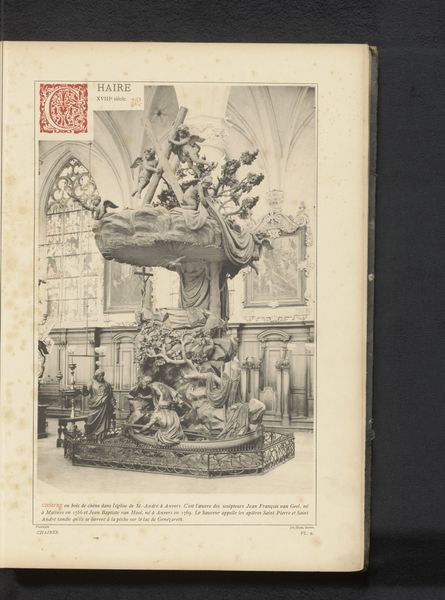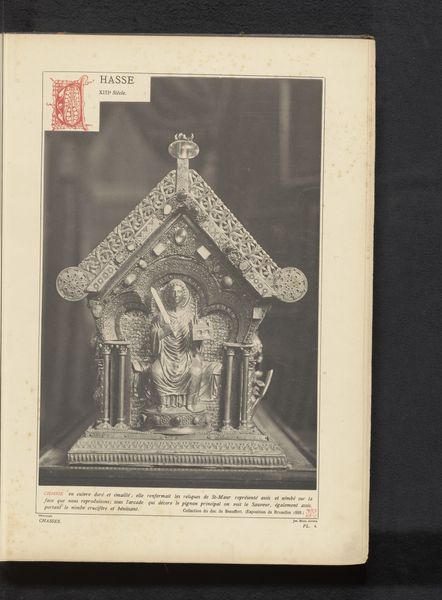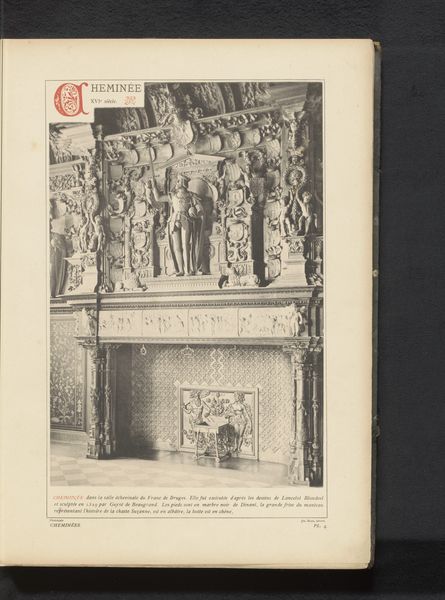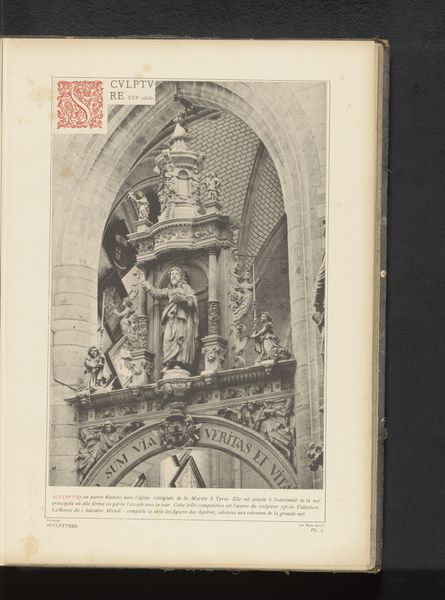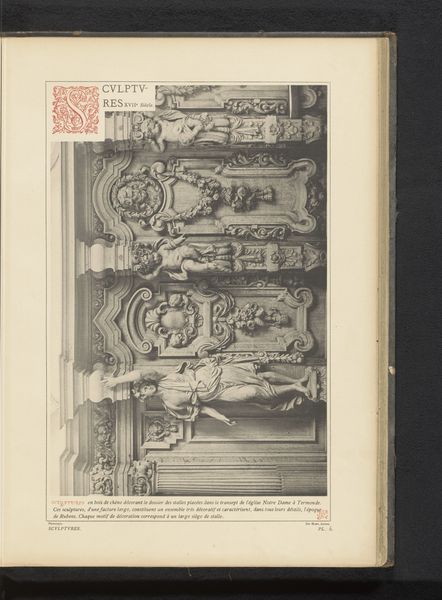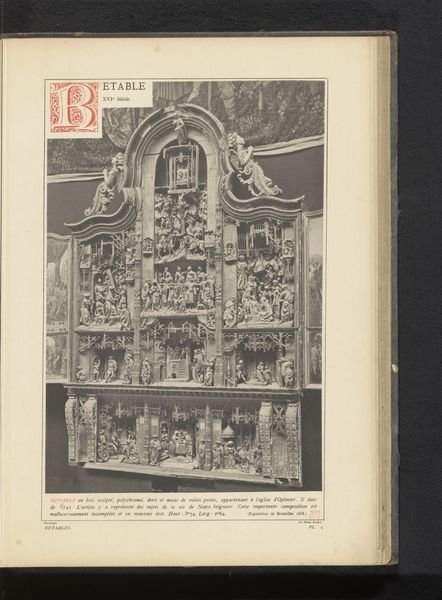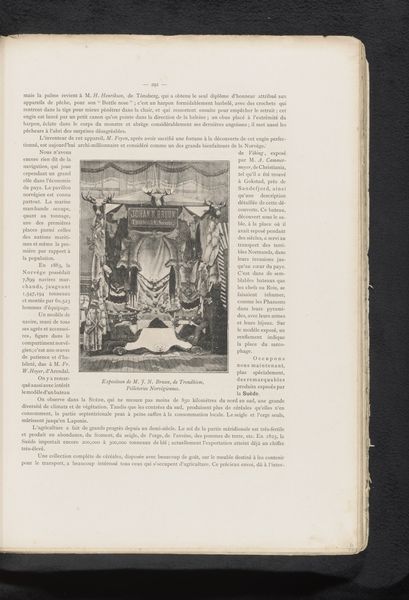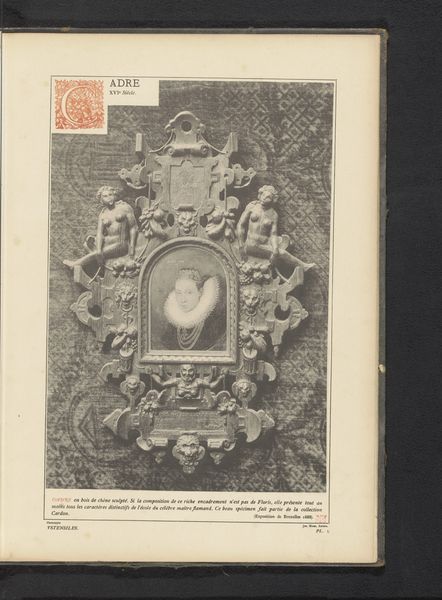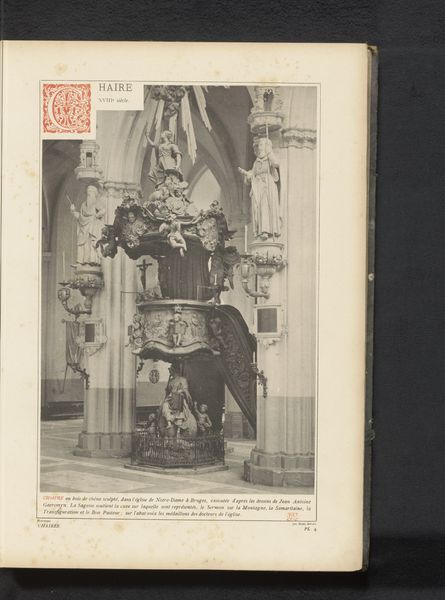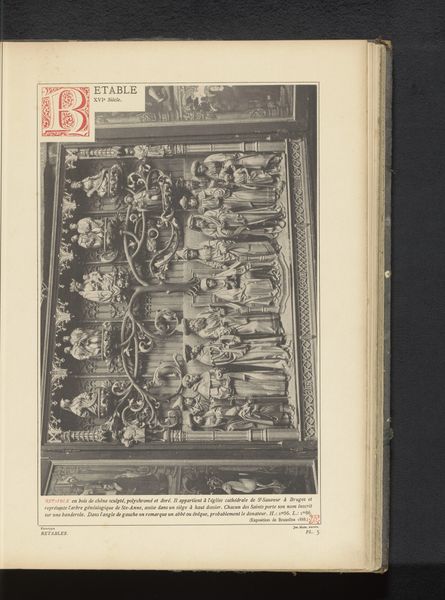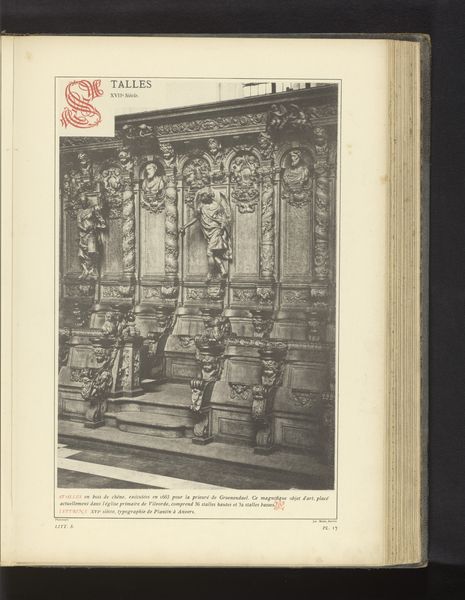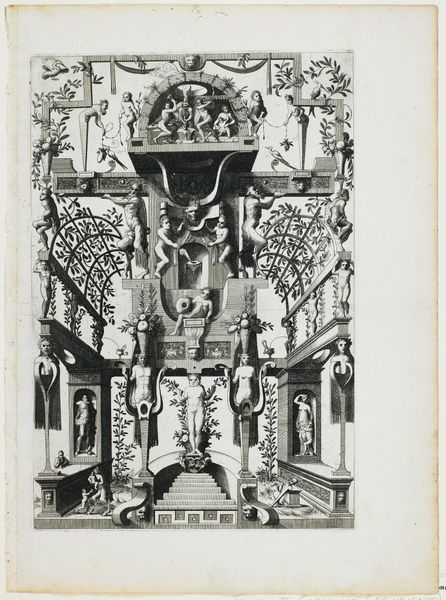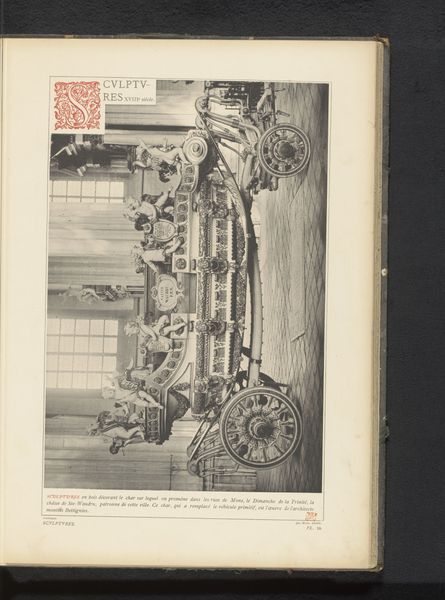
Eikenhouten preekstoel in de Kathedraal van Sint-Michiel en Sint-Goedele in Brussel, België, ontworpen door Henri-François Verbruggen before 1887
0:00
0:00
Dimensions: height 342 mm, width 232 mm
Copyright: Rijks Museum: Open Domain
Curator: This arresting image depicts the oak pulpit in the Cathedral of St. Michael and St. Gudula in Brussels, created by Henri-François Verbruggen. It predates 1887, judging by the date of this photographic plate. Editor: My initial impression is one of incredible, almost overwhelming detail. The artist has skillfully packed so much ornamentation into a single form. The complexity seems… purposeful. Curator: Indeed, the Baroque style practically demands such ornate presentation. But look closely, and you’ll notice how Verbruggen utilizes it to create a layered narrative. The oak is transformed, becoming almost theatrical in its delivery. This pulpit transcends mere functionality. It aims to deliver a divine message, powerfully. Editor: Precisely! I am particularly drawn to how the intertwined figures at the base give way to cleaner, more architectural forms higher up. There is an incredible contrast, especially visible at this scale. A formalist would say it displays superb hierarchical control of form. The interplay between light and shadow alone is masterfully orchestrated to amplify its texture and dimension. Curator: Note also the careful integration of iconographic motifs. Observe, for instance, the central figures seemingly plucked from classical myths—a clear reference to secular learning alongside the divine word. This integration mirrors Baroque artists' intention to blend reason and faith during the Counter-Reformation. Editor: I’d add that the placement within the cathedral is essential. I mean, it wouldn't work so well within different interior geometries, like one that favors simplicity or restraint. Curator: I concur; the visual language of the Baroque, though undeniably potent, truly finds its voice in symbiotic harmony with the soaring Gothic arches and the hushed reverence inherent to its location. I’m impressed by how the echoes of religious drama continue to resonate. Editor: Looking at it this way underscores my own belief in the power of form itself. In a way, we all decode artworks through subjective experience and knowledge, yet in our observations, an art's real intent can come to light.
Comments
No comments
Be the first to comment and join the conversation on the ultimate creative platform.
